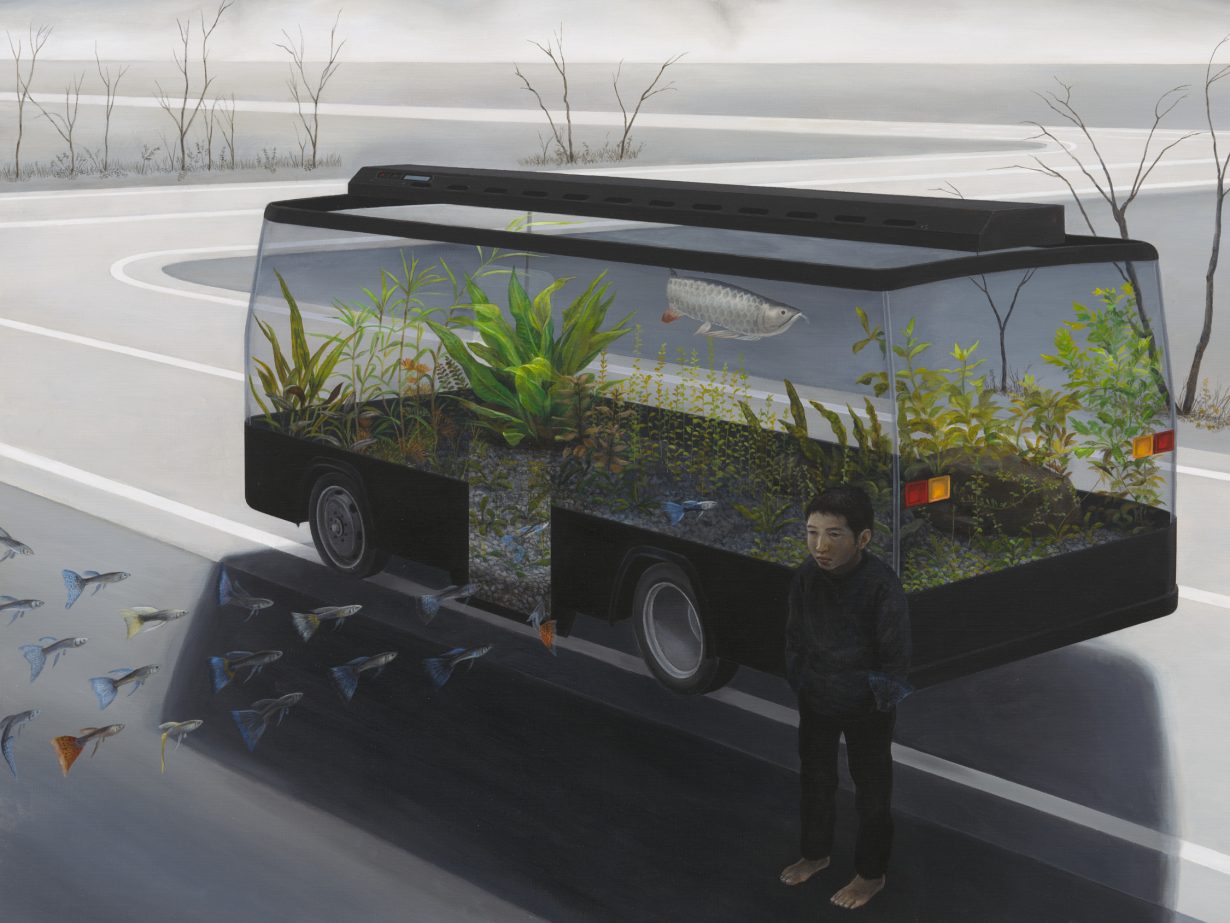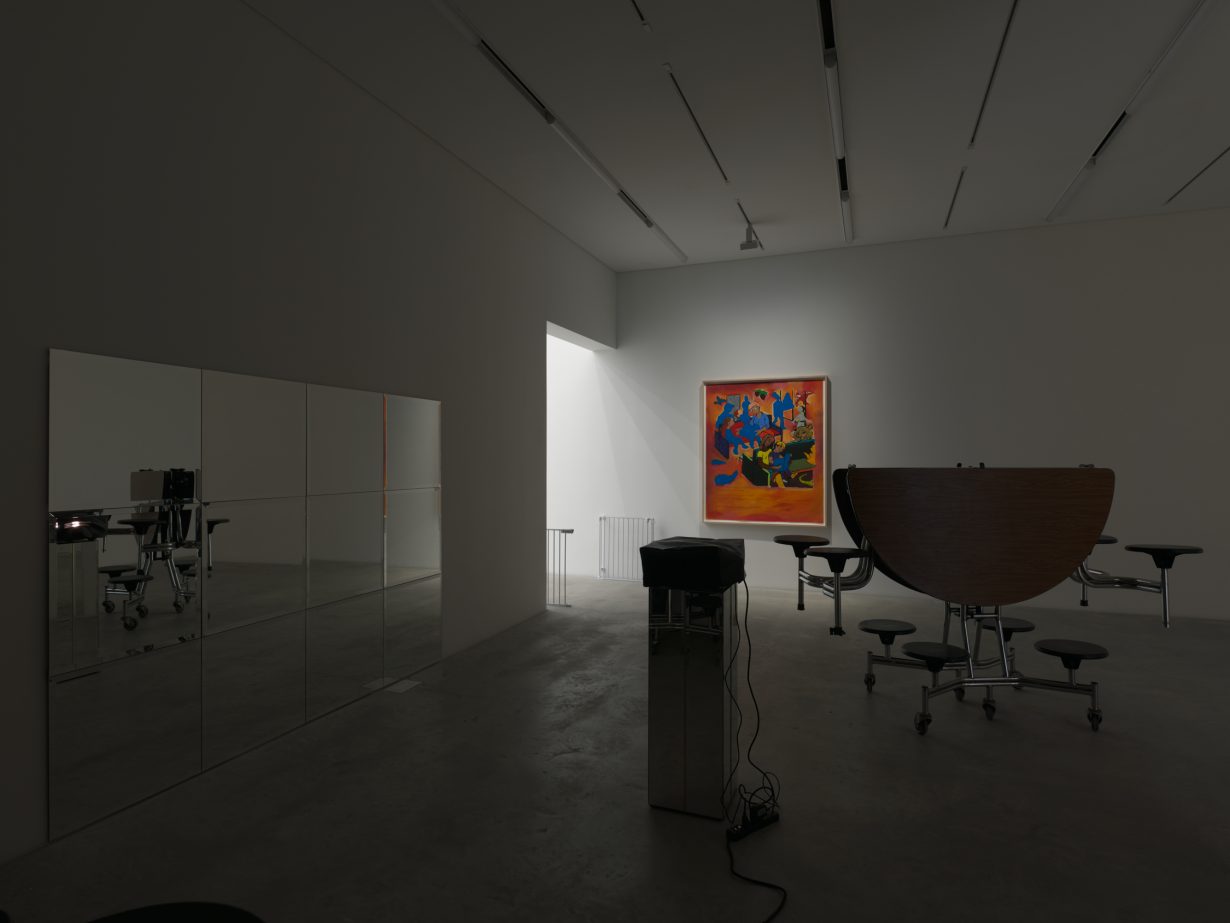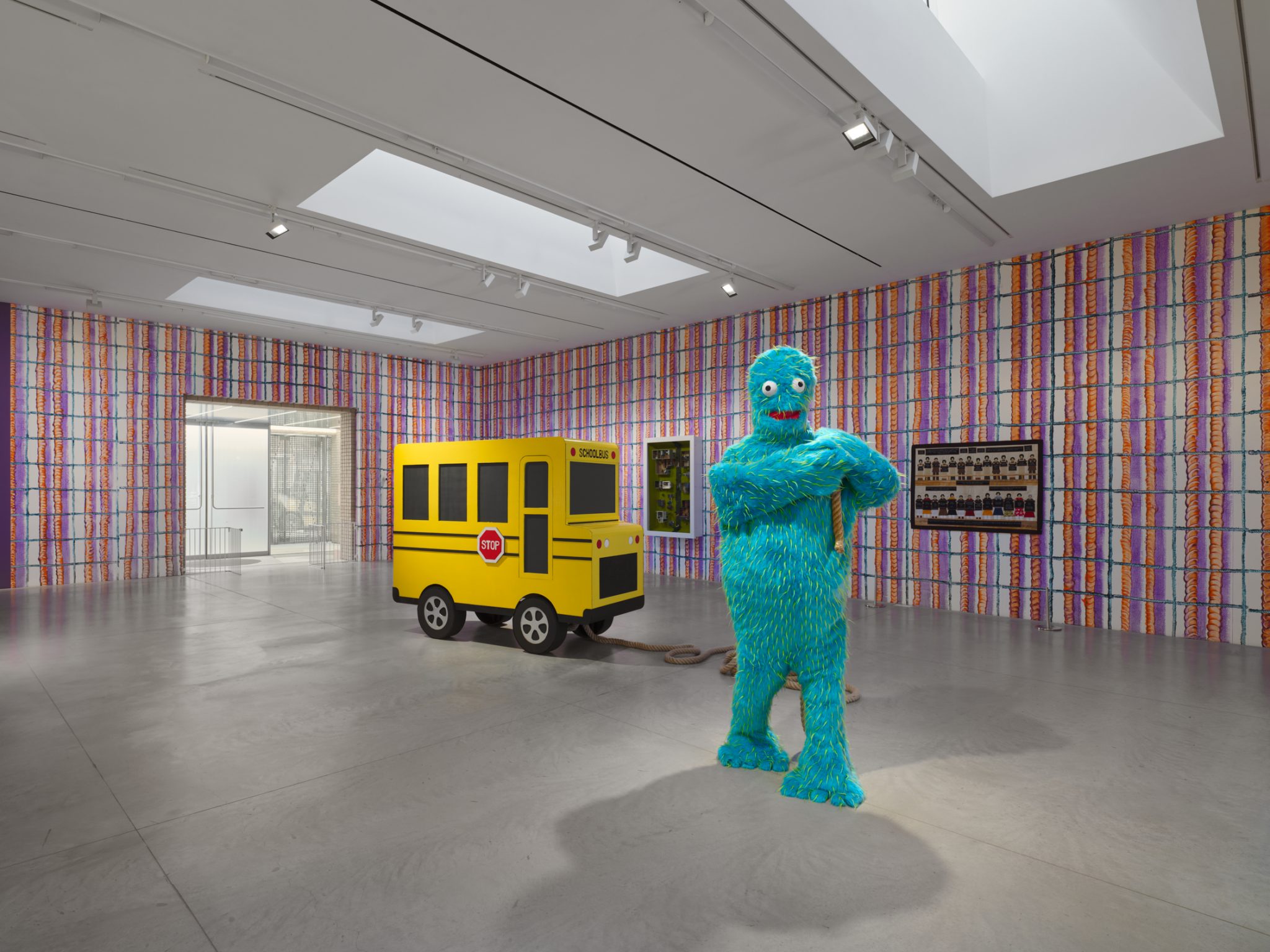A new show at Amant, New York explores what its curators call ‘the traumas and forms of violence that are intrinsic to the process of being educated’
A black-and-white photograph depicts rows of children sitting along the perimeter of a twentieth-century schoolroom, their heads bowed over writing tablets. The image is busy, the room cramped, and for all the tightly packed bodies, you could almost miss the clasped hands floating along the left edge of the frame – that must be the schoolteacher standing just out of view.
This 1902 photograph by Jacob Riis, Classes in Allen St. and Chrystie St. Public Schools, is the first work I saw in On Education. Among the works by 35 artists, it is by far the oldest – most date from the 1980s to the present – but it sets up some of the show’s key themes. Explicitly in opposition to ‘the utopian narratives and aims that often frame art’s engagement with pedagogy’, the curators intend to foreground ‘the traumas and forms of violence… that are intrinsic to the process of being educated’. Despite its title the show is not a treatise or proposal to rethink formal education in schools – even if some archival materials from Bruce High Quality Foundation gesture to artists’ efforts to provide free education. It instead captures the friction, pressure, harm and deprivation that characterise our era’s headlines on education. We see, in Riis’s claustrophobic image of the classroom and beyond, how the architecture and infrastructure of education shape children’s physical and psychological experiences of learning, and more pointedly, how watchful adults can replicate harmful patterns as they teach children.
That last theme looms largest: many artworks portray situations where children are victims of their parents and other authority figures. A painting by Michela Griffo, Why Haven’t We Heard About the Girls? (2006), features a vintage-style cartoon strip relaying a family’s reactions to learning that a daughter had been molested by the parish priest for years – the father beats the daughter, the siblings are aghast, the mother confronts the priest and the priest slyly defends the church. Across the room, Paul McCarthy and Mike Kelley’s single-channel video Family Tyranny/Cultural Soup (1987) depicts a bare-chested McCarthy in a tiny turf-filled film set doling out physical and verbal abuse to Kelley, who plays the role of the dad’s shrieking son. In subsequent scenes, McCarthy channels the same manic energy while rubbing mayonnaise around the bodies of fist-clenched dolls in a twisted version of a cooking show, telling viewers how to inflict on their kids the same punishments he received as a boy.

This and other works show artists processing forms of inherited, institutionalised and intergenerational trauma. A motivating question for On Education seems to be how adults and other institutions shape children’s lives and identities – and vice versa, for adults, too, are positioned as victims of a sort. A sculpture dominating the largest gallery caricatures this dynamic: Stefan Tcherepnin’s blue googly-eyed, human-height cartoon monster (somewhere between the Cookie Monster and Sully from Monsters, Inc., but with green frosted tips tows a painted cardboard schoolbus via a hefty climbing rope. The name of this fuzzy figure and its burden, Cadisyphos with Baggages (2019), riffs on the myth of Sisyphus, comparing the task of educating busloads of children to Sisyphus’s punishment of repeatedly rolling a boulder up a mountain. Elsewhere, Kasia Fudakowski, with a drier sense of humour, displays two engraved brass plates titled Reasons to Reproduce, Reasons Not to Reproduce (2023). Including statements such as ‘Your own offspring become your primary focus, to the detriment of the rest of the world’s needs’ and ‘You must take part, without sarcasm or irony, in the institutions your child must legally be involved with’, the piece establishes some of the more fundamental levels of anxiety, distrust and curiosity in adult–child relations.
These works are at times aesthetically discordant, perhaps to entangle what’s coded cartoonish-childish alongside what’s coded austere-adult. The most enigmatic works on view are neither optimistic nor pessimistic. Tetsuya Ishida’s grey-toned painting Untitled (2003) depicts a crestfallen man standing in a barren landscape outside a futuristic glass-walled aquarium-bus as a school of airborne fish swims through its doors into its lush interior, while Emanuel Almborg’s video Baby Group (2024) records infants interacting, observed through one-way mirrors and cameras attached to the babies’ bodies. Both artists portray children inhabiting worlds of their own (even if adults built those worlds to watch). For Almborg, the babies model prelingual social relations outside of adult interference. For Ishida, the young ‘school’ is composed of another species entirely, ready to study and be studied.

Many other works portray children without adults, or children’s spaces absent any occupants at all. Marc Kokopeli contributes a sequence of photographs (Untitled, 2016) that show children sharing, not sharing, pouting and trying to engage. Installed across low walls built for the work, calibrated to a child’s eye level and covered with soft pastel fabric, these images apparently feature the artist himself and were taken by his mother during the 1990s as educational tools. One room over, in a dimly lit gallery, Brad Kronz has installed I had all the tools even at a young age (2014), which consists of folded cafeteria tables – the circular type with attached stools – surrounding a partially covered projector that flashes muted imagery onto a large mirror, which further throws and abstracts the visuals.
On Education ultimately left me with images of separation – loneliness, isolation, antagonism, subdivision – and the feeling that, somehow, adults and children need or want to live separate lives. Is education ultimately a struggle for independence? Is that how we locate its supposedly intrinsic violence? This underlying tension is concretised in Ghislaine Leung’s baby gates that flank each threshold within the galleries (Gates, 2019). Infantilising the adult visitors in the room, the plastic gates remind us that, unlike children, we know that these and other barriers can be installed, opened, closed, broken and torn down, whether or not we can do so ourselves. In our struggles for independence, we learn to organise, form groups, seek support. (See Graziela Kunsch’s work documenting students occupying state schools in São Paulo in 2015–16 to oppose their proposed closure by the government.) But we learn this through observation, instruction and mimicry – watching our parents open gates, being told which buttons to press. And as we inherit old means, we can try to push past them too.
On Education at Amant, New York, through 17 August
From the Summer 2025 issue of ArtReview – get your copy.
